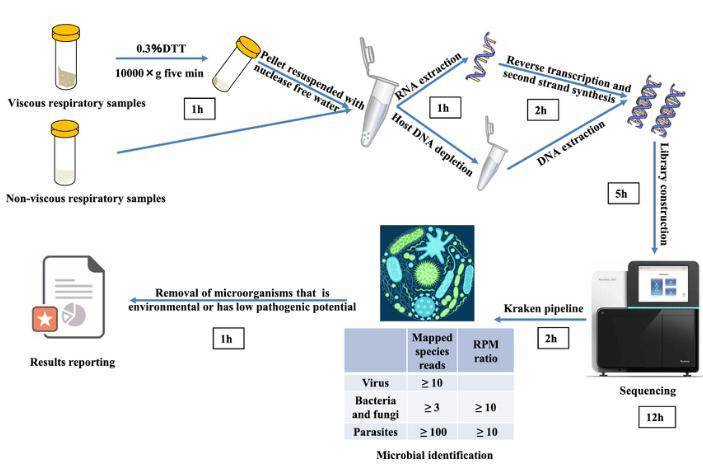| PCR |
Simple, fast, cost-effective, quantitative detection, high accuracy. |
Relies on subjective assumptions, detects known microorganisms, dependent on primer amplification (which may not always be reliable), limited to a small portion of the microbial genome. |
| Cultivation Method |
Adaptable to larger sample volumes, cost-effective, considered the "gold standard" for comparative studies. |
Sensitivity limited by antibiotic use during cultivation, difficulty in culturing some microorganisms, inability to detect viruses, long detection cycles. |
| Mass Spectrometry: |
Simple process, high specificity and accuracy, capable of high-throughput analysis. |
Relies on cultured positive colonies, limited to about 1000 known microorganisms, some pathogens cannot be identified to the species level, qualitative rather than quantitative. |
| Immunological Detection |
Timely, short cycles, cost-effective, simple operation, detects chlamydia, mycoplasma, viruses, etc. |
Poor sensitivity and specificity, not all pathogenic microorganisms have corresponding antibodies, susceptible to false positives, potential for window periods. |
| mNGS |
Objective detection, independent of assumptions, detects any microorganism, discovers new pathogens, quantitative nucleic acid detection, can examine any part of the genome. |
Results influenced by host background microbiome, high sample requirements, susceptible to contamination from other sites and environmental microorganisms, less timely than PCR nucleic acid detection, higher cost. |
| tNGS |
Unaffected by the human genome and background bacteria, enhanced performance in detecting antibiotic resistance genes, higher cost-effectiveness, sensitive detection of low-abundance pathogens. |
Unable to detect unknown microorganisms. |


 Complete mNGS assay workflow. (Yukun He et al,. 2022)
Complete mNGS assay workflow. (Yukun He et al,. 2022)